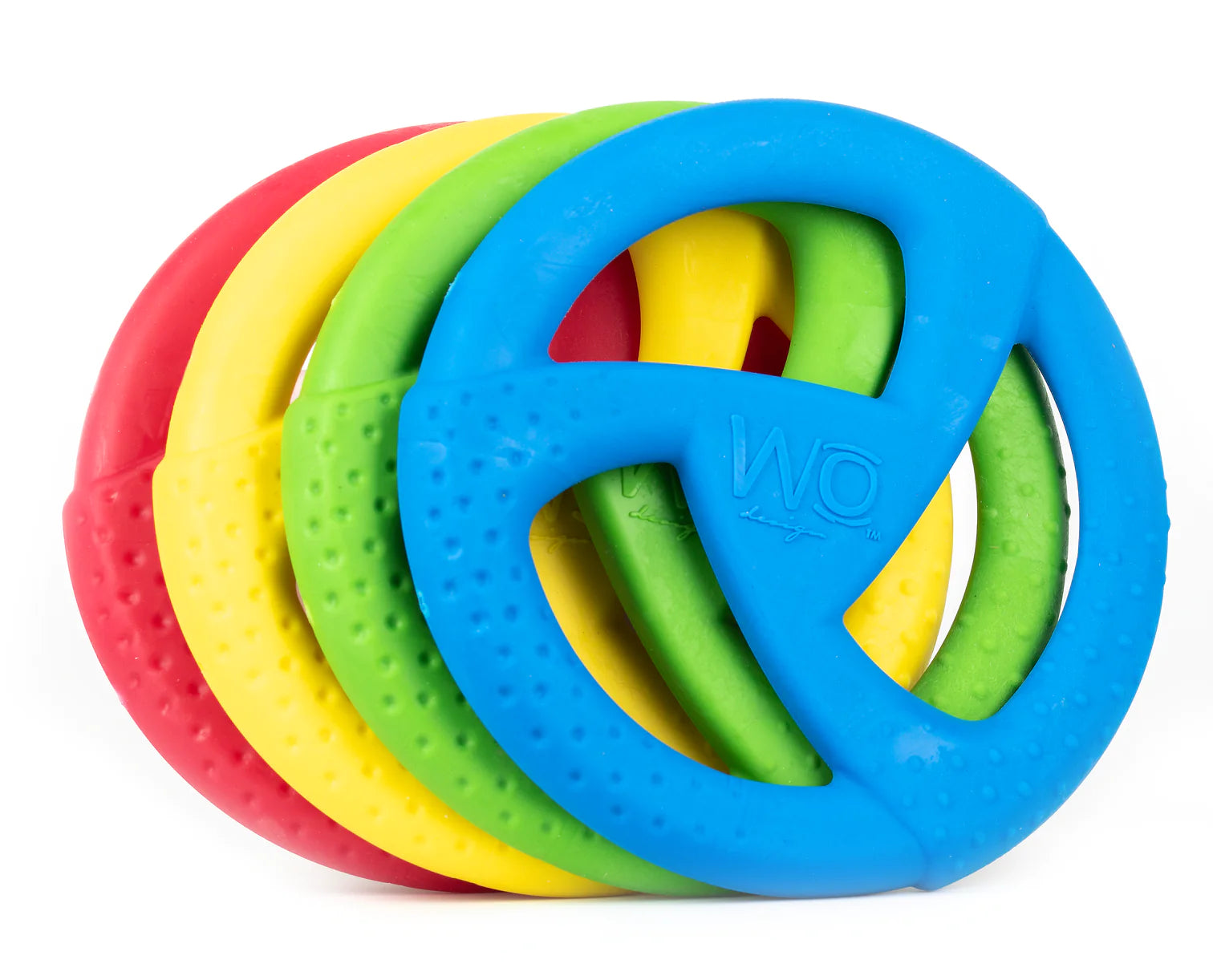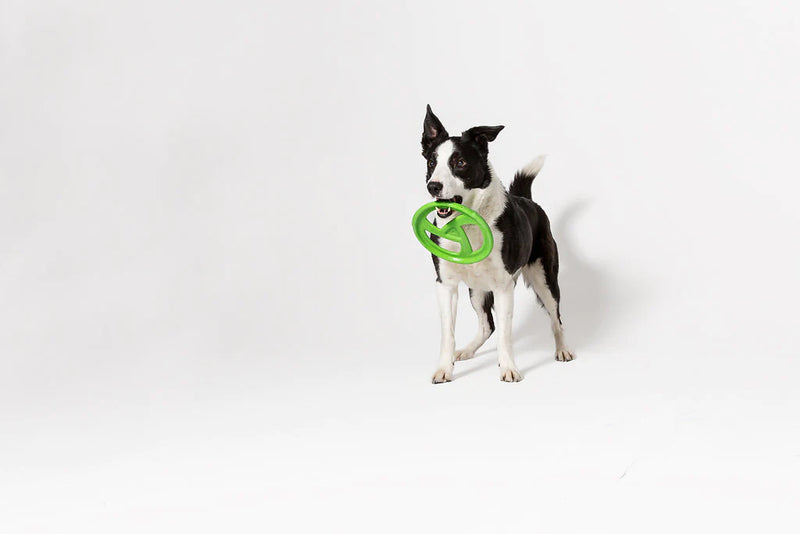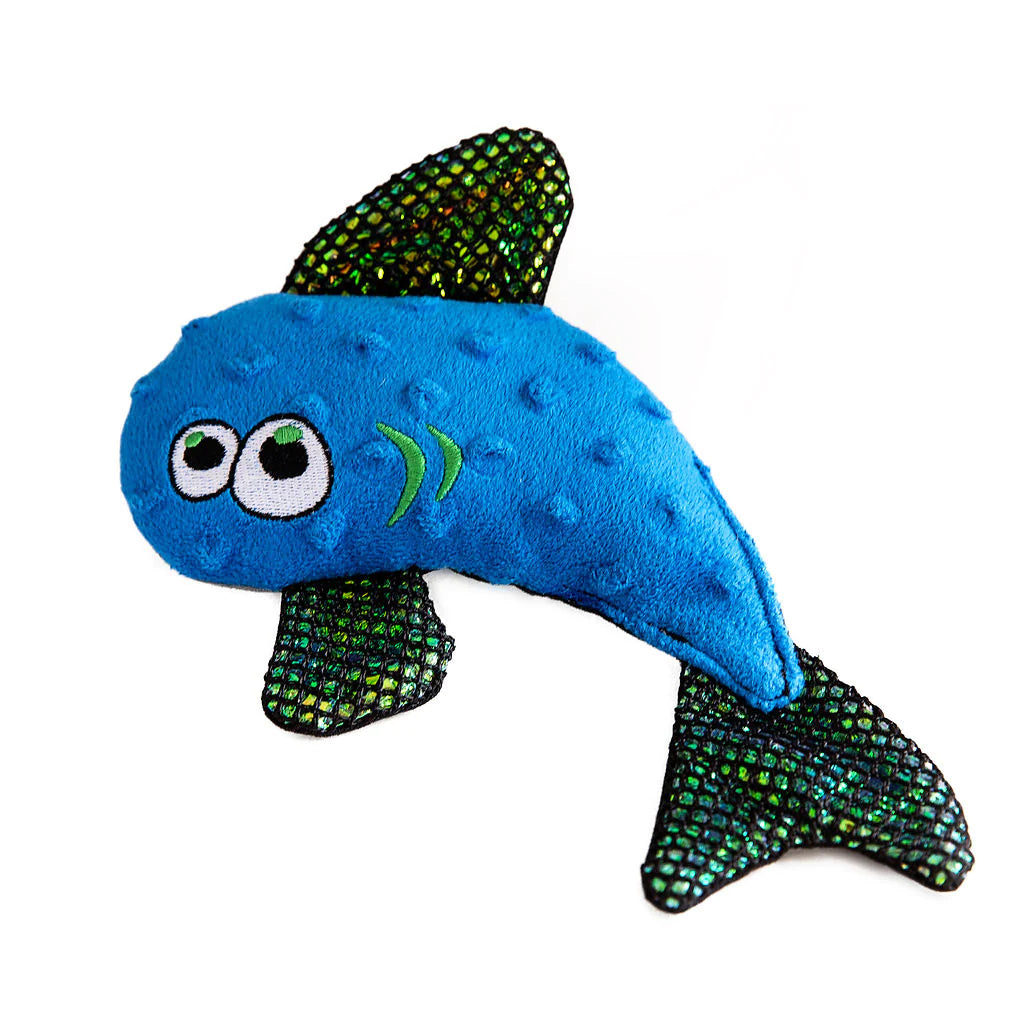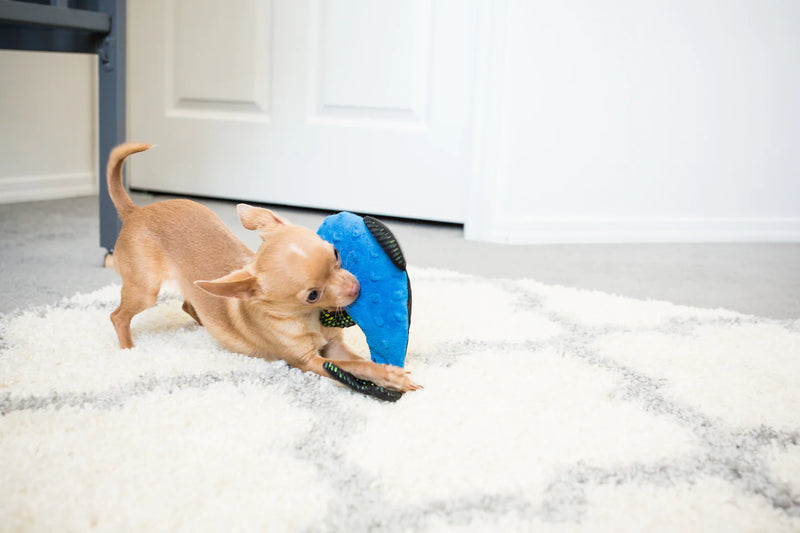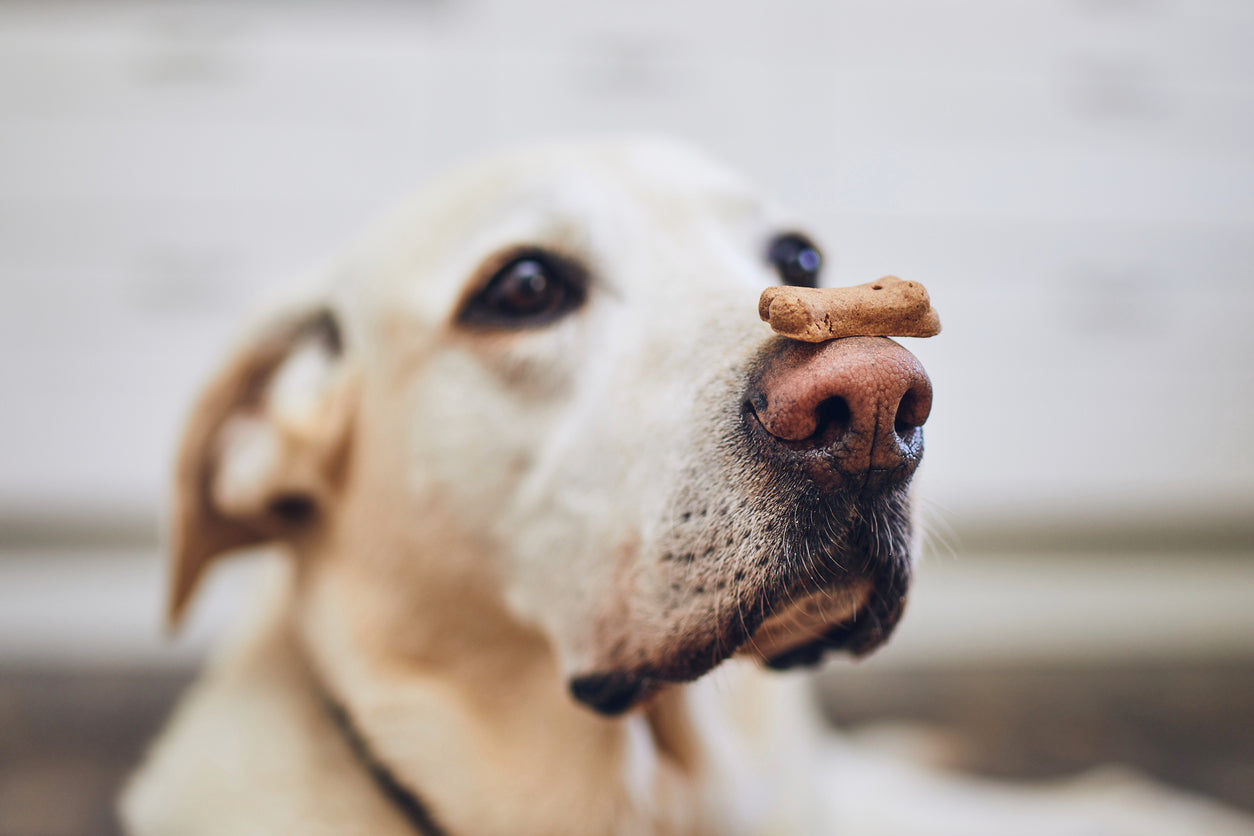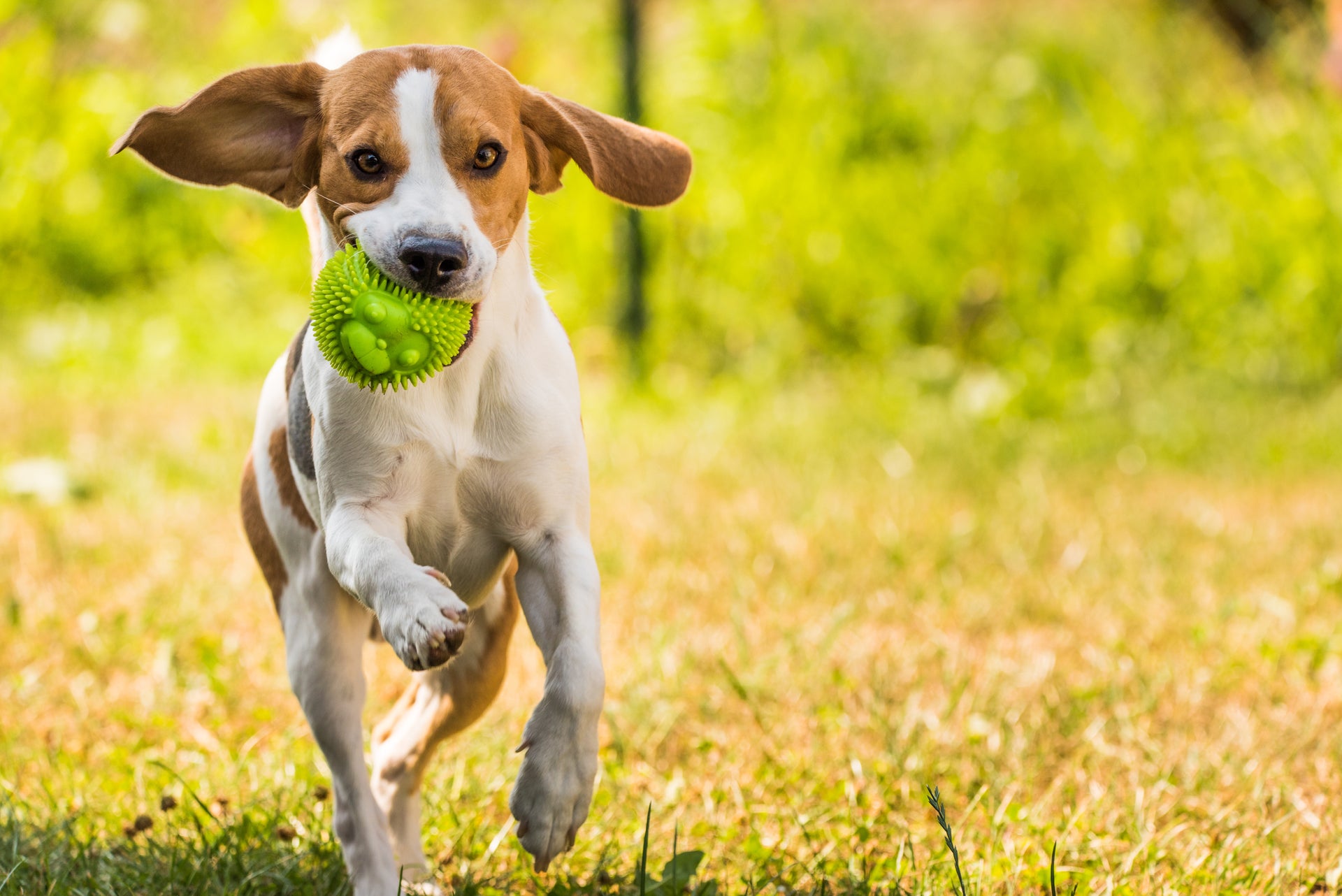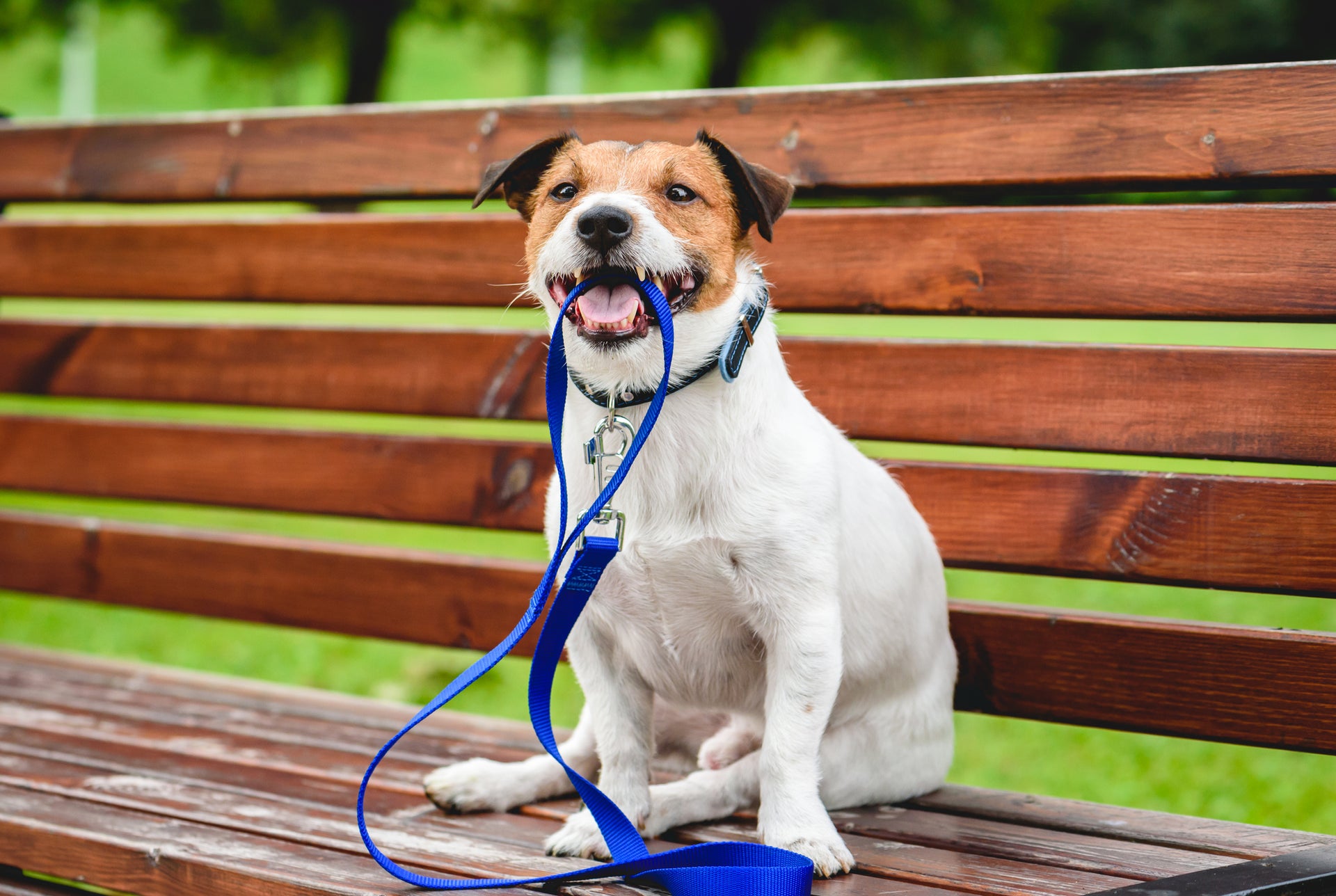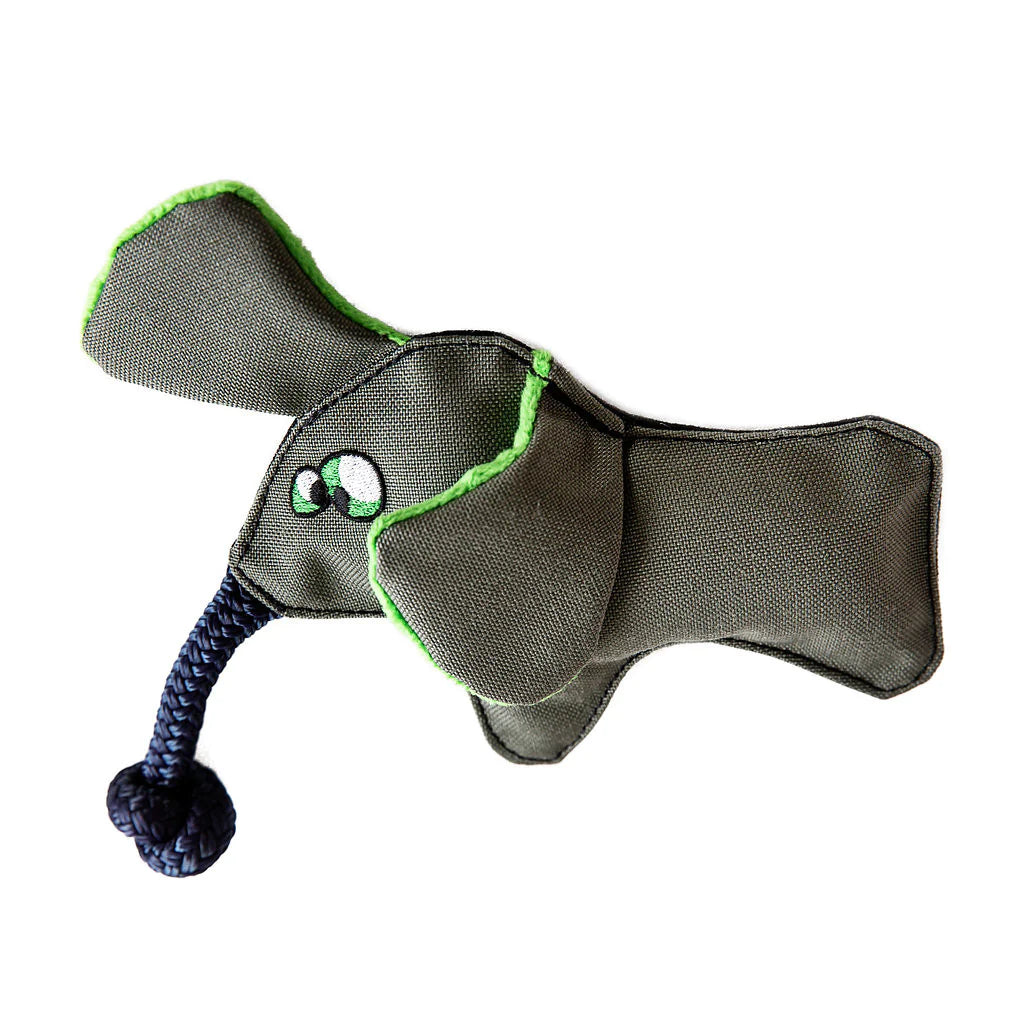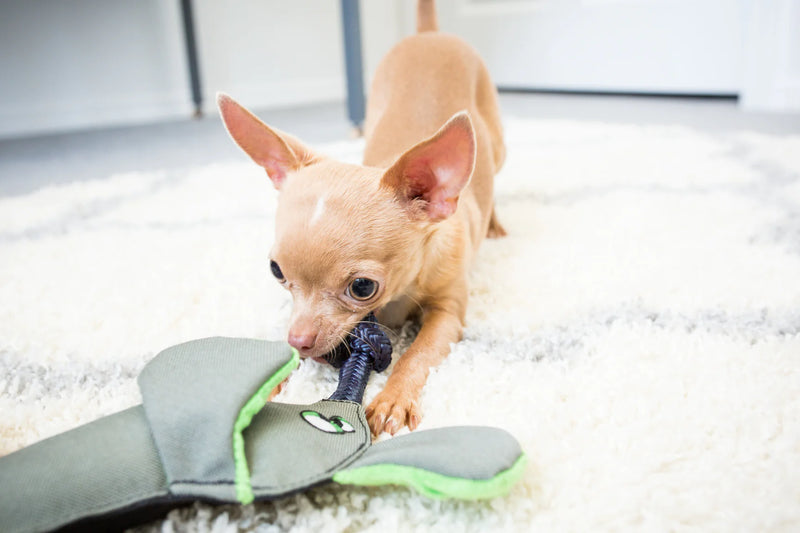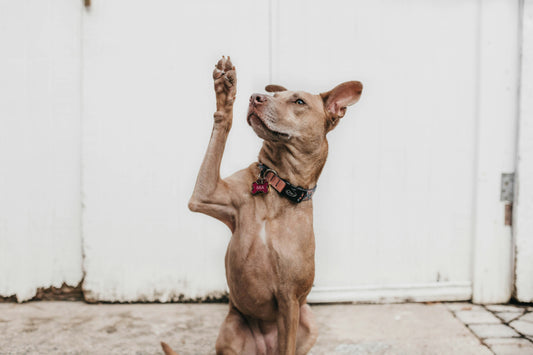
Common Dog Paw Problems and How to Treat Them
Dogs rely on their paws for various activities, such as walking, running, and playing. However, their paws are not immune to problems. Common paw problems can arise due to environmental factors, diet, or genetic predispositions. It is essential for you to pay attention to your dog’s paw health to ensure their overall well-being.
Healthy paws are crucial for a dog’s comfort and mobility. Paw pads act as shock absorbers, provide traction, and assist with balance, slowing down, and stopping. Despite their durability, dog paws can still experience issues that can cause pain and discomfort. Regular inspection of the paws is necessary to identify any problems and take appropriate measures to keep them healthy and safe.
Key Takeaways
- Common paw problems can cause discomfort and pain for dogs, but with proper care, they can be treated effectively.
- Healthy paws are essential for a dog’s overall well-being, as they provide balance, traction, and shock absorption.
- You can maintain your dog’s paw health by regularly checking for any problems and taking necessary steps to prevent and treat common paw issues.
- Proper grooming, regular cleaning, moisturizing, skin health supplements and early detection are key to preventing and managing paw problems.
- Home remedies are often enough to treat most paw issues, but in some cases, veterinary help may be necessary for more serious conditions.
Understanding Your Dog’s Paw Health
Understanding your dog’s paw health is essential for providing the best care and maintaining their overall well-being. By learning about the anatomy of a dog’s paw and being aware of signs of unhealthy paws, you can effectively monitor your dog’s paw health and take appropriate measures to prevent and treat common paw problems.
The Anatomy of a Dog’s Paw
A dog’s paw consists of several parts that contribute to its functionality and health. These include the paw pad, which acts as a shock absorber and provides traction, the nails, which aid in gripping and scratching, and the structure of the dog’s feet, which allows for flexibility and stability. Understanding the anatomy of a dog’s paw can help you identify any abnormalities or potential problems. Regular paw checks and veterinary examinations can ensure that any issues are detected early and appropriate care is provided.
Signs of Unhealthy Paws to Watch For
There are several signs of unhealthy paws you should watch out for. These include hair loss, excessive licking or chewing of the paws, redness and swelling. Hair loss on the paws can indicate underlying issues such as allergies or infections. Excessive licking or chewing can be a sign of discomfort or irritation. If any of these signs are observed, pet owners should consult a veterinarian for a thorough examination and appropriate treatment.
Top 8 Dog Paw Problems and How to Solve Them
Dogs can experience a range of paw problems, from cracked and dry paw pads to infections and parasites. It is essential to be familiar with these issues and their solutions to provide the best care.
1. Cracked or Dry Paw Pads
Cracked or dry paw pads are a common occurrence in dogs and can be caused by various factors such as exposure to rough surfaces, hot pavement, cold weather, dry air, chemicals, and excessive licking. To treat cracked or dry paw pads, pet owners can use paw balms or moisturizers specifically designed for dogs.
Regular application of these products can help hydrate and protect the paw pads, preventing further damage and discomfort. Additionally, you should avoid walking their dogs on hot pavement or rough surfaces to prevent the recurrence of cracked or dry paw pads.
2. Cuts and Abrasions on Paws
Dogs are active animals and can easily get cuts and abrasions on their paws while running and playing. These injuries can be caused by sharp objects on the ground or rough terrains. It is crucial for you to be vigilant and take precautions to prevent such injuries. In case of cuts or abrasions, here’s what you should do:
- Clean the affected area with mild soap and water.
- Gently remove any debris or foreign objects from the wound.
- Apply an antiseptic ointment to prevent infection.
- Bandage the paw if necessary and keep it clean and dry.
- Monitor the wound for signs of infection, such as redness, swelling, or discharge.
- Seek veterinary attention if the wound is deep or does not heal within a few days.
3. Dog Paw Infection
Dog paw infections can occur due to various bacteria and fungi that naturally reside on the paw pads. However, these microorganisms can sometimes overgrow and cause infections. Common signs of paw infections include itching, redness, swelling, and oily discharge.
To treat paw infections, you should consult a veterinarian who may prescribe antibiotics or antifungal medications. It is also important to prevent the dog from licking the infected area excessively, as this can worsen the infection. Regular cleaning and proper hygiene practices can help prevent paw infections and promote paw health.
4. Parasites Affecting Dog Paws
Parasites such as mites can cause various problems in a dog’s paws, including itching, scaling, hair loss, and swelling. To detect and treat mite infestations, a veterinarian may need to conduct tests and prescribe appropriate medications.
It is important to regularly check their paws for any signs of parasites and seek veterinary assistance if necessary. Additionally, preventive measures such as regular grooming, keeping the living environment clean, and using appropriate parasite control products can help reduce the risk of infestations and maintain paw health.
5. Allergic Reactions on Paws
Just like humans, dogs can also have allergies that can manifest as reactions on their paws. Common allergens include certain foods, pollen, dust mites, and other environmental factors. Allergic reactions on the paws can cause excessive licking, biting, and chewing, leading to further irritation and swelling.
Try to identify and avoid the allergens that trigger their dog’s allergic reactions. In some cases, veterinary assistance may be necessary to diagnose and treat the allergies. Providing a balanced and appropriate diet, regular grooming, and minimizing exposure to potential allergens can help manage allergic reactions and promote paw health.
6. Blisters and Burns on Dog Paws
Blisters and burns on dog paws can occur when dogs walk on hot surfaces such as hot pavement or sandy beaches. These burns can result in swollen, red, or blistering paw pads. It is important to be aware of the temperature of the ground before allowing your dog to walk on it. If the pavement is too hot for a person to comfortably press their palm to it for 10 seconds or longer, it is too hot for a dog’s paws. .
7. Nail Problems in Dogs
Nail problems are common in dogs and can cause pain and discomfort. Long nails can become ingrown, leading to pain and potential infections. You should regularly trim your dog’s nails to prevent these issues. If a nail becomes torn or fractured, it can be extremely painful and may require veterinary attention.
Proper nail trimming techniques and regular grooming can help prevent nail problems and maintain paw health. You should also be cautious when trimming your dog’s nails to avoid cutting too close to the quick, which can cause bleeding. If in doubt, it is best to seek professional grooming assistance.
8. Foreign Objects in Dog Paws
Dogs can easily pick up foreign objects in their paws while exploring their environment. These objects, such as small rocks, sticks, burrs, broken glass, or debris, can cause discomfort, pain, and potential infections. If a foreign object is visible and easily removable, you can use tweezers or other suitable tools to gently remove it. However, if the object is deeply embedded or causing severe pain, it is best to seek veterinary assistance.
Preventing Dog Paw Problems
Preventing dog paw problems is essential for maintaining paw health and overall well-being. By following simple preventive measures, you can minimize the risk of common paw problems and promote healthy paws.
Regular Cleaning and Moisturizing
Regular cleaning and moisturizing can help prevent injuries and promote paw health. You should gently clean your dog’s paws after outdoor activities, paying attention to any cuts, abrasions, or foreign objects. Warm water and mild soap can be used to clean the paws. After cleaning, it is important to thoroughly dry the paws to prevent moisture buildup. Applying a dog-specific moisturizer or paw balm can help keep the paw pads hydrated and protected.
Monitoring and Early Detection
Regular monitoring of dog paws is crucial for early detection of any problems. Pet owners should routinely check their dog’s paws for any signs of redness, swelling, cuts, abrasions, or foreign objects. Early detection allows for timely intervention and prevents the condition from worsening. If any abnormalities are noticed, pet owners should seek veterinary assistance. By being vigilant and proactive in paw care, pet owners are doing a great job in ensuring their furry friends have healthy and happy paws.
Skin Health Supplements
To help support paw health, supplements like Bando’s Skin Health formula containing fish oil and biotin can be a great addition to your dog’s health regimen. These ingredients are proven to impact skin and coat health and also have anti-inflammatory benefits.
Book a Consultation with our Team for More Help
If you’re facing persistent issues with your dog’s paws despite trying various remedies, it might be time to seek professional advice. Our team of experts can provide solutions for a range of dog paw problems, including infections, injuries, and allergies. Book a consultation today and we’ll put together a plan to get your dog’s paws healthy.
Frequently Asked Questions
How Often Should I Check My Dog’s Paws?
You should check your dog’s paws regularly for any signs of problems. It is recommended to inspect the paws at least once a week or more frequently if the dog is prone to paw issues. Regular checks allow for early detection of any abnormalities and prompt intervention to maintain healthy paws.
Can Diet Affect the Health of My Dog’s Paws?
Yes, diet can affect the health of a dog’s paws. Food allergies or sensitivities can manifest as paw problems, such as itching, redness, or swelling. Providing a balanced and appropriate diet can help maintain paw health and prevent common paw issues. Consultation with a veterinarian or pet nutritionist can help identify any dietary concerns and ensure the best care for a dog’s overall health, including their paws.
How to Deal with Tick Bites on Dogs
Tick bites in dogs are more than just a nuisance; they pose a significant health risk. Ticks are small parasitic arachnids that feed on the blood of their hosts. They are not only a source of irritation and discomfort for your dog but can also transmit Lyme disease among other tick-borne illnesses.
These tick-borne diseases range from mildly irritating to severely debilitating conditions, and in some cases, can even be fatal if left untreated. Quick recognition and treatment of a tick bite are essential. It’s crucial to understand the risks associated with tick bites and adopt a proactive approach to avoid any complications.
Understanding Dog Tick Bites
Ticks are ectoparasites that thrive by feeding on the blood of mammals, including dogs. They are a concern for dog owners not only because of the direct harm they can cause but also because they are capable of transmitting diseases. Ticks latch onto their hosts to feed, and it is during this feeding process that pathogens can be transmitted, leading to tick-borne diseases in dogs.
There are several species of ticks that commonly affect dogs, but one of the most prevalent is the brown dog tick. This particular species is well-adapted to living in close proximity to dogs and can even complete its entire life cycle indoors, making it a year-round threat to your pet. Other tick species, such as the black-legged tick (also known as the deer tick), are also capable of transmitting diseases like Lyme disease, further highlighting the importance of being vigilant about tick prevention and control.
Identifying a Dog Tick Bite
The appearance of ticks can vary significantly between species. The brown dog tick is reddish-brown and lacks any easily distinguishable markings that are seen on other ticks, like the black-legged tick, which may have a more distinctive appearance with its dark legs contrasting against a lighter body. Identifying the tick species can be challenging for a layperson, but understanding the general appearance and being able to recognize a tick on your dog is crucial. If you find a tick, note its size, color, and any distinct markings, as this information can be helpful to your veterinarian, especially if your dog starts showing symptoms.
Preventing Tick Bites
An effective tick prevention strategy encompasses both environmental management and the use of tick preventatives.
Environmental Management
One of the first steps in tick prevention is managing your environment to make it less appealing to ticks. Keeping your lawn mowed, and bushes trimmed, and eliminating tall grasses can significantly reduce tick populations in your yard. Consider creating a barrier with gravel or wood chips between your lawn and wooded areas to restrict tick migration into your pet’s play area. Additionally, discourage wild animals, which can carry ticks, from entering your yard by securing trash cans and removing food sources.
Use of Tick Preventatives
Your best option for tick prevention is the use of tick preventatives. There is a range of products available, including tick collars, topical treatments, and oral medications:
- Tick Collars: These are worn around your dog’s neck and release a chemical that repels and kills ticks. They are usually effective for several months but may not be suitable for dogs that are sensitive to the active ingredients or those that swim frequently.
- Topical Treatments: Applied directly to the skin, these treatments not only kill ticks but can also provide a repellent barrier for several weeks. It’s important to apply these products correctly and to the right area of your dog’s body for maximum effectiveness.
- Oral Medications: These are pills or chews that your dog can take once a month. They work by killing ticks and fleas that bite your dog. Oral medications are easy to administer and don’t leave any residue on your dog’s coat, but it’s essential to choose a product appropriate for your dog’s size and weight.
Regular Tick Checks
In addition to these preventative measures, conducting regular tick checks is crucial, especially after your dog has been outside in areas known for ticks. This simple measure can be incredibly effective in finding and removing ticks before they have a chance to transmit diseases. Remember, the quicker you find and remove a tick, the lower the risk of disease transmission.
Choosing the Right Tick Prevention Method
- Tick Collars are a convenient choice for continuous protection. They’re especially suited for dogs that spend a lot of time outdoors. However, if your dog is sensitive to topical treatments or has a history of skin irritation, you might want to consider alternative options. Also, remember that the effectiveness of tick collars can diminish if they get wet frequently, so they might not be the best choice for dogs that love to swim.
- Topical Treatments are applied to the skin, usually between the shoulder blades, and provide a month-long barrier against ticks. When applying a topical treatment, ensure your dog’s skin is dry and that the product is applied directly to the skin, not just the fur, for optimal absorption. These treatments are effective but require care to ensure children or other pets don’t come into contact with the treated area until it’s dry.
- Oral Medications offer a no-mess, easy-to-administer option that’s ideal for dogs and households where topical treatments might pose a problem due to skin sensitivities or the risk of contact with children or other pets. When choosing an oral medication, it’s crucial to select a dosage appropriate for your dog’s weight to ensure effectiveness and safety.
Regardless of the method you choose, it’s important to:
1. Consult Your Veterinarian: Before starting any new tick preventative, talk to your vet. They can provide personalized advice based on your dog’s health history, lifestyle, and the prevalence of ticks in your area.
2. Read Instructions Carefully: Whether you’re opting for a collar, topical treatment, or oral medication, always read and follow the product’s instructions. This ensures the safety and effectiveness of the tick prevention method.
3. Monitor Your Dog for Reactions: After administering any new tick preventative, watch your dog closely for any signs of adverse reactions. If you notice anything unusual, contact your veterinarian immediately.
By carefully selecting and properly using tick prevention products, you can significantly reduce your dog’s risk of tick bites and the diseases they may carry.
What to Do If You Find a Tick on Your Dog
Here’s a step-by-step guide to effectively remove a tick:
1. Gather Your Tools: You’ll need fine-tipped tweezers to use as a tick removal tool, gloves to protect yourself, antiseptic or isopropyl alcohol, and a container or ziplock bag to dispose of the tick.
2. Stay Calm and Prepare Your Dog: Keep your dog calm and still during the removal process. It may help to have someone assist you by holding your dog gently but firmly.
3. Remove the Tick: Using the tweezers, grasp the tick as close to your dog’s skin as possible. Pull upward with steady, even pressure. Avoid twisting or jerking the tick, as this can cause the mouth parts to break off and remain in the skin. If this happens, try to remove the mouth parts with the tweezers. If unable to remove the mouth easily with clean tweezers, leave it alone and let the skin heal.
4. Clean the Bite Site: After removing the tick, clean the bite area and your hands with rubbing alcohol, an iodine scrub, or soap and water.
5. Dispose of the Tick: Submerge the tick in alcohol, place it in a sealed bag/container, wrap it tightly in tape, or flush it down the toilet. Never crush a tick with your fingers.
6. Monitor the Bite Site: Keep an eye on the area where the tick was attached for any signs of infection, such as redness, swelling, or warmth. If you notice any unusual symptoms in your dog over the next few weeks, such as lethargy, fever, or loss of appetite, consult your veterinarian.
Aftercare Following Tick Removal
After successfully removing a tick from your dog, the care you provide in the following days is crucial for ensuring the bite site heals properly and to monitor for signs of tick-borne diseases. Here’s what you need to know about aftercare and monitoring after a tick bite:
Caring for the Bite Site
- Apply Antiseptic: Once the tick is removed, apply an antiseptic solution to the bite site to prevent infection. You can use over-the-counter antiseptic creams or solutions recommended by your veterinarian.
- Keep the Area Clean: Avoid bathing your dog or allowing them to swim immediately after tick removal to ensure the bite site remains clean and dry. Check the area daily for signs of irritation or infection.
- Monitor for Healing: The bite site should gradually improve and heal over time. If you notice persistent redness, or swelling, or the site appears to worsen, it may be a sign of infection, and you should contact your veterinarian.
Watching for Signs of Tick-Borne Disease
After a tick bite, it’s important to monitor your dog for signs and symptoms of tick-borne diseases. These can vary depending on the disease but often include:
- Fever
- Lethargy or decreased activity
- Loss of appetite
- Swollen lymph nodes
- Joint swelling or pain
- Unusual bleeding or bruising
These symptoms can appear days to weeks after the tick bite. If you notice any of these signs or if your dog seems unwell, it’s crucial to seek veterinary care promptly. Early diagnosis and treatment can significantly improve the outcome for tick-borne diseases.
When to Seek Veterinary Care
While many tick bites resolve without issue, certain situations require veterinary attention:
- If you were unable to remove the entire tick or if parts of the tick remain in your dog’s skin.
- If the bite site becomes infected.
- If your dog shows symptoms of a disease.
Your veterinarian can provide a thorough examination, recommend appropriate tests for tick-borne diseases, and prescribe treatment to address any infections or diseases transmitted by the tick.
Treating Tick Bites and Tick-Borne Diseases
After a tick bite, effective treatment and monitoring are essential to prevent complications and address any tick-borne diseases your dog may have contracted. Here’s an overview of the treatment options and when to seek veterinary care:
Common Tick-Borne Diseases in Dogs
Tick-borne diseases can vary in severity, from mild and self-limiting to severe and potentially life-threatening. Understanding the common diseases transmitted by ticks can help you recognize symptoms and seek timely treatment for your dog:
- Lyme Disease: Caused by the bacterium Borrelia burgdorferi, Lyme disease is transmitted by black-legged ticks. Symptoms include fever, lameness, swollen joints, and lethargy.
- Ehrlichiosis: This disease is caused by the bacterium Ehrlichia and is transmitted by the brown dog tick and others. Symptoms can include fever, bruising, nosebleeds, and anemia.
- Anaplasmosis: Similar to Ehrlichiosis, Anaplasmosis is caused by the bacterium Anaplasma phagocytophilum and presents with fever, joint pain, and lethargy.
Bando Can Help with Your Dog’s Tick Problems
In your journey to protect your dog from ticks and the diseases they carry, Bando offers a range of supplements that can support your dog’s health and enhance their resilience against tick bites. While no supplement can replace the need for regular tick prevention methods, supplements can help strengthen your dog’s immune system, making them less susceptible to the effects of tick-borne diseases.
Schedule a Consultation with Our Team
Are you struggling with tick bites on your dog? Our team is here to help. We’ll offer you guidance on how you can prevent future bites and how to deal with existing tick bites.
What to Put on a Dog Rash
When your dog starts scratching incessantly or you notice a patch of irritated skin, it’s natural to feel concerned. Dog rashes may signify underlying health problems that need immediate attention. From allergies and parasites to environmental irritants and more serious health conditions, the causes of your dog’s rash can vary widely.
In this article, we’ll give you effective solutions for treating your dog’s skin rash and strategies to prevent them in the future. By understanding the common causes, symptoms, and various treatment options, you can ensure your dog remains happy, healthy, and rash-free.
Understanding Dog Rashes
Common Causes of Dog Rashes
Dog rashes can stem from a multitude of factors. Allergies are a prevalent cause, whether from food, environmental factors like pollen, or contact with irritants such as certain fabrics or cleaning products. Parasites, including fleas, ticks, and mites, can also lead to skin rashes, as can fungal and bacterial infections which often complicate the initial irritation.
Environmental irritants that you may not immediately consider, such as the chemicals in your lawn care products or the detergent used to wash your dog’s bedding, can also lead to skin rashes. Additionally, underlying health conditions, including hormonal imbalances or autoimmune diseases, might manifest as skin problems.
Symptoms to Watch For
Identifying a skin rash early on can significantly improve the ease and effectiveness of treatment. Key symptoms include:
- Itchy Skin: If your dog is scratching more than usual or seems unable to leave a particular area alone, it’s a clear sign of discomfort.
- Redness or Flaky Skin: Irritated skin often appears red, inflamed and/or flaky.
- Hair Loss: Patches of hair loss around the rash area can indicate a more severe skin condition.
- Bumps or Scabs: Small bumps, pustules, or scabs on the skin surface are common with skin infections.
- Odor: A bad smell emanating from the rash area can indicate a yeast or bacterial infection.
Recognizing these symptoms early and understanding their potential causes is the first step toward effective treatment.
Home Remedies for Dog Rashes
Gentle Cleansing
The first step in treating a dog rash at home is to gently clean the affected area. This helps remove any irritants that may be contributing to the rash and prevents infection. Use a mild, dog-specific shampoo or make a homemade solution with warm water and a small amount of mild soap. Be sure to rinse the area thoroughly to remove all soap residue, as leftover soap can further irritate the skin. Pat the area dry with a soft towel; avoid rubbing, as this can exacerbate the irritation.
Natural Soothers
Several natural remedies can provide relief for your dog’s irritated skin:
- Aloe Vera: Known for its soothing properties, aloe vera can help calm inflamed skin and promote healing. Use pure aloe vera gel and apply it directly to the rash. Ensure your dog doesn’t lick the area, as ingesting aloe vera can be harmful.
- Oatmeal Baths: Oatmeal has natural soothing properties that can relieve itchiness and discomfort. Grind plain oatmeal into a fine powder and dissolve it in warm bath water. Let your dog soak in the oatmeal bath for 10-15 minutes, then rinse thoroughly.
- Coconut Oil: Coconut oil has anti-inflammatory and antibacterial properties, making it an excellent option for treating minor rashes. Apply a small amount of coconut oil to the affected area once or twice daily.
Over-the-Counter Solutions
For mild rashes, over-the-counter (OTC) products can also be effective:
- Hydrocortisone Creams: These creams can reduce inflammation and itching. Choose a product specifically designed for dogs, and follow the application instructions carefully. Monitor your dog to ensure they don’t lick the cream off, as ingestion could lead to side effects.
- Antihistamines: If you suspect your dog’s rash is allergy-related, antihistamines like Benadryl can provide relief. Always consult your vet for the correct dosage and to ensure it’s safe for your dog.
While home remedies and OTC solutions can be effective for mild rashes or as part of an initial treatment plan, it’s important to monitor your dog’s condition closely. If the rash persists or worsens, consult your veterinarian for further guidance.
Advanced Treatments for Persistent Rashes
When home remedies and over-the-counter solutions don’t provide relief, or if your dog’s rash is particularly severe, it may be time to consider more advanced treatment options. These treatments often target the underlying cause of the rash and can be more effective in providing relief and promoting healing.
Medicated Shampoos and Sprays
Medicated shampoos and sprays are formulated to address specific types of skin conditions, including bacterial infections, yeast infections, and fungal infections. These products often contain ingredients like chlorhexidine, miconazole, or ketoconazole, which have antimicrobial properties. When using a medicated shampoo:
- Follow the Instructions: It’s crucial to follow the product’s instructions closely, as the contact time with the skin is often key to effectiveness.
- Frequency of Use: Your vet may recommend using the shampoo 2-3 times a week initially, with less frequent use as the rash improves.
- Combination Treatments: In some cases, your vet may suggest using medicated sprays or creams in conjunction with the shampoo for the best results.
Prescription Medications
For rashes caused by more severe underlying conditions or those that don’t respond to other treatments, prescription medications may be necessary. These can include:
- Antibiotics: If the rash is due to a bacterial infection, oral antibiotics may be prescribed to eliminate the infection.
- Antifungals: For rashes caused by fungal infections, oral antifungal medications can be effective.
- Steroids: In cases of severe inflammation or allergic reactions, your vet may prescribe corticosteroids to reduce swelling and itching. These are typically used for the shortest duration possible to minimize side effects.
- Immunosuppressants: For autoimmune-related skin conditions, medications that modulate the immune response can be helpful.
It’s important to use these medications exactly as prescribed by your veterinarian and to complete the full course of treatment, even if the rash seems to improve before the medication is finished. Stopping treatment early can lead to a recurrence of the rash and may make future treatment more difficult.
Preventing Future Rashes
Preventing dog rashes from occurring in the first place is preferable to treating them after the fact. Here are some strategies to help keep your dog’s skin healthy:
Diet and Nutrition
A balanced diet rich in essential nutrients can support skin health. Consider incorporating foods or supplements high in omega-3 fatty acids, which can reduce inflammation and improve skin condition. If you suspect food allergies, discuss with your vet the possibility of trying a limited ingredient diet to identify and eliminate the offending allergen.
Skin and Coat Supplements
In addition to a balanced diet, incorporating a specialized skin and coat supplement into your dog’s routine can significantly enhance their skin health and resilience against rashes. Bando’s Skin & Coat Soft Chew Pet Supplement is designed to nourish your dog’s skin from the inside out.
It is formulated with a blend of natural ingredients known for their skin-supportive benefits, including:
- Omega-3 Fatty Acids: Sourced from fish oil, these essential fatty acids help reduce inflammation and are crucial for maintaining healthy skin and a shiny coat.
- Vitamins E and A: Both vitamins play a vital role in skin health, aiding in the repair of skin cells and providing antioxidant support to protect against environmental damage.
- Biotin: Also known as Vitamin B7, biotin supports healthy skin and hair growth, ensuring your dog’s coat stays thick and lustrous.
Regular Grooming and Care
Regular grooming helps remove irritants from your dog’s coat before they can cause skin problems. Brushing also distributes natural oils, which can protect the skin. If your dog is prone to skin issues, consider using hypoallergenic or oatmeal-based shampoos that are less likely to cause irritation.
Environmental Adjustments
Minimize your dog’s exposure to known allergens and irritants. This may include using hypoallergenic bedding, avoiding walking in areas with high pollen counts during allergy season and using natural cleaning products that are less likely to irritate your dog’s skin.
By understanding the causes of dog rashes and the various treatment options available, you can take proactive steps to keep your dog’s skin healthy and rash-free. If you’re ever in doubt about the best course of action, consulting with a veterinarian can provide you with the guidance you need to ensure your dog’s well-being.
Book a Consultation with Our Vet Experts
If your dog is experiencing persistent or severe skin issues, don’t hesitate to reach out for professional help. Our team of experts is here to provide guidance, support, and advanced care options tailored to your dog’s specific needs. Book a consultation today, and take the first step towards relieving your dog’s discomfort and restoring their skin health.








